Am always on the hunt for new flavors and dishes (at least ones that are new to me). So, upon stumbling across Okonomiyaki, a Japanese savory pancake of sorts, I was immediately intrigued.
Okonomiyaki translates into “grill as you like” — okonomi (“as you like” or “what you wish”) and yaki (“grill”). Traditionally, okonomiyaki are prepared on Japanese grills (known as teppans), hence its name. In the home, okonomiyaki can be prepared in a skillet or electric griddle.
The pancake itself is straightforward — flour, water (or dashi), eggs, and loads of cabbage (also added chopped, raw shrimp). It’s also common to add thin strips of pork belly; a type of Japanese mountain yam (Nagaimo or Yamaimo), which I’ve read has a sticky gelantinous texture when grated and adds moisture to the pancake; and pickled ginger/beni syoga (although, I omitted these ingredients since they’re not readily available). Alternatively, you could buy premixed okonomiyaki flour that contains dried Yamaimo powder.
The toppings are what make okonomiyaki, well, unique. First off, the finished pancake is brushed with okonomiyaki sauce. After looking at the ingredients of the commercially prepared stuff, I decided to take the advice of others and made my own okonomiyaki sauce with simple combo of ketchup, worcestershire, and soy/tamari. Next, the pancake is topped with mayonnaise, typically, Japanese Kewpie, but any type of mayo is fine (or you can make your own). Sounds a bit strange, but all the disparate flavors seem to work. Oh, but we’re not done yet. There are also bonito flakes (aka katsuboshi or dried, shaved mackerel), thin strips of nori (or seaweed flakes known as aonori), and chives or green onions for garnish. I found the bonito flakes and nori at Whole Foods.
You can get creative adding a different mix of vegetables, seafood, meat, or even noodles. As okonomiyaki’s name implores, grill as you like 🙂
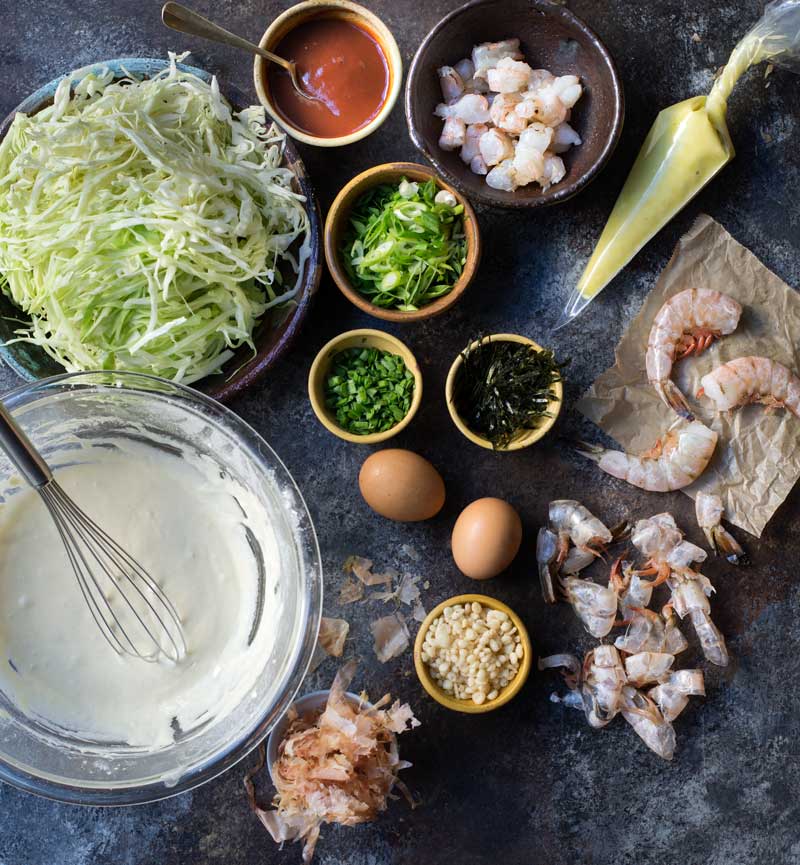
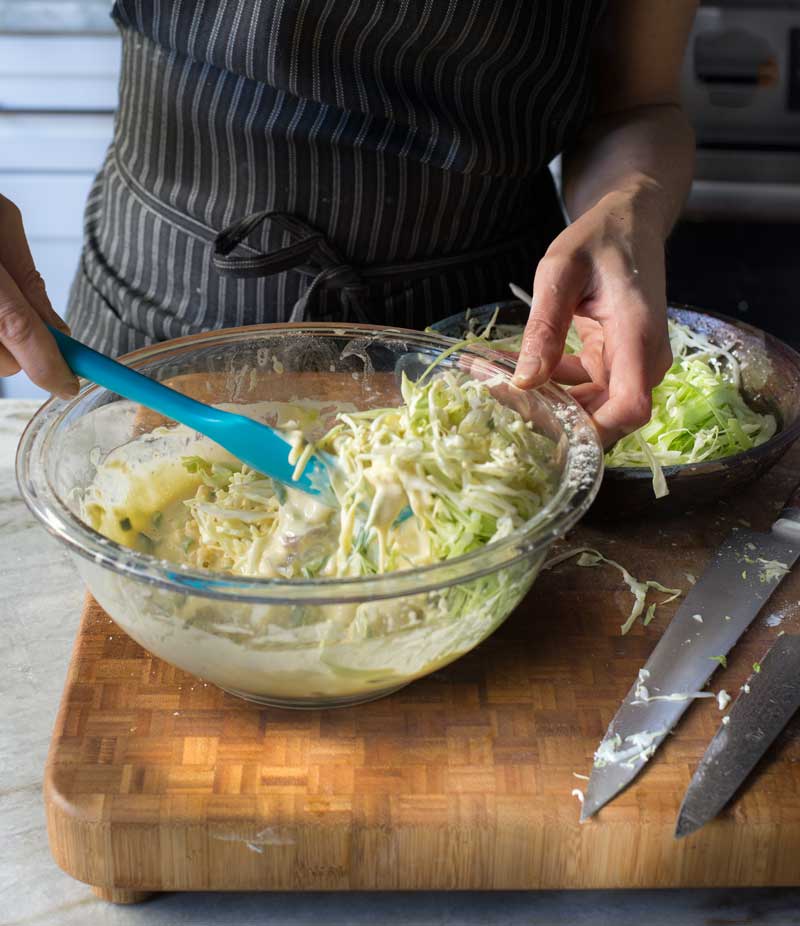
I decided to make my own mayo since I had leftover egg yolks from a recent French macaron attempt (which requires the whites but not the yolks). Am still trying to perfect my French macaron, but that’s a subject for another day. Of course you could use your favorite brand of store-bought mayo.
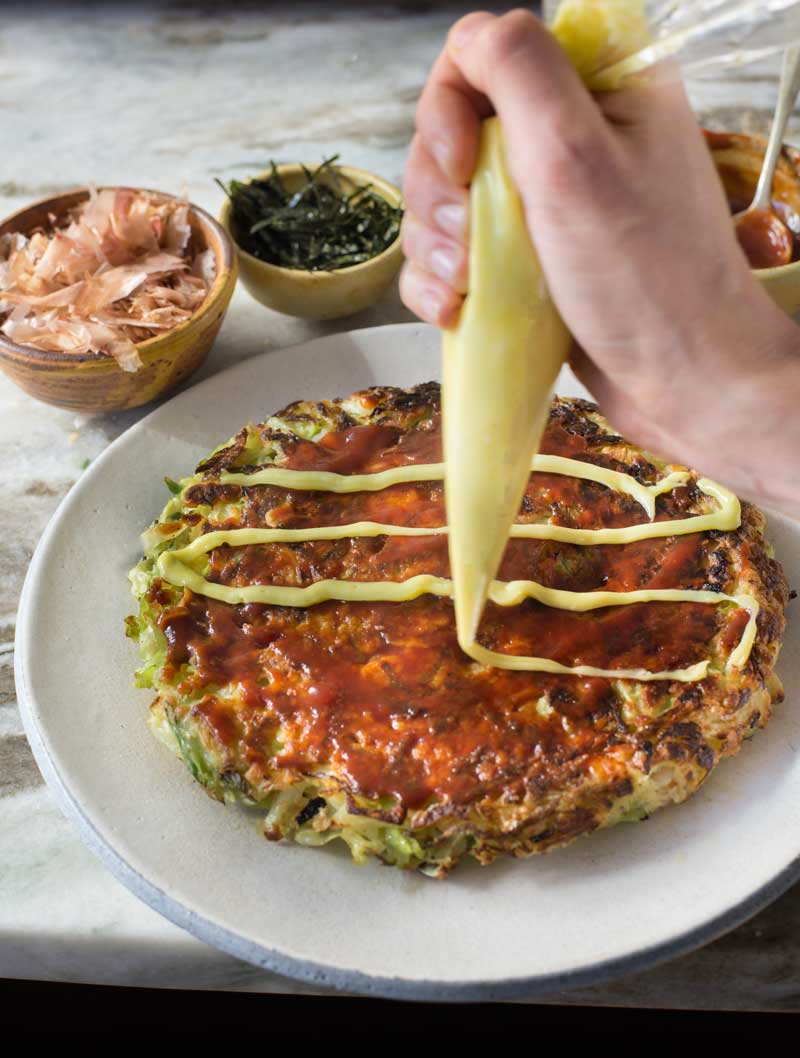
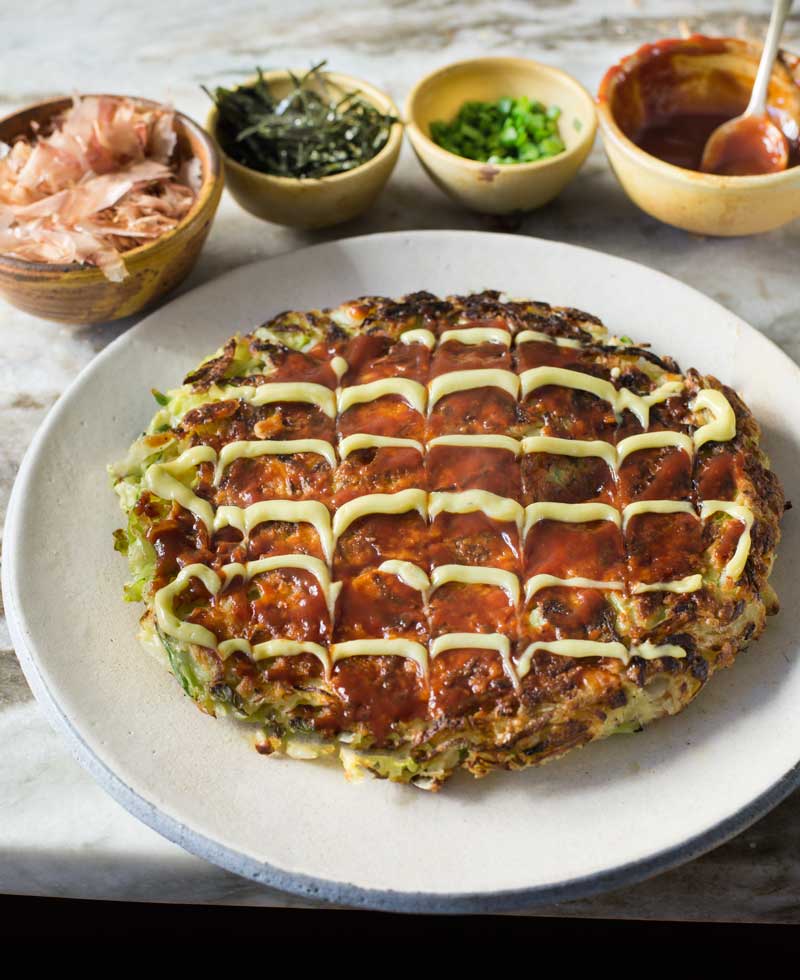
Unfortunately, I don’t have any video (except for some bad footage I shot with my cell phone), but when you add the bonito flakes, they come alive and dance on top of the pancake. Google ‘dancing bonito flakes’ to see them in action.
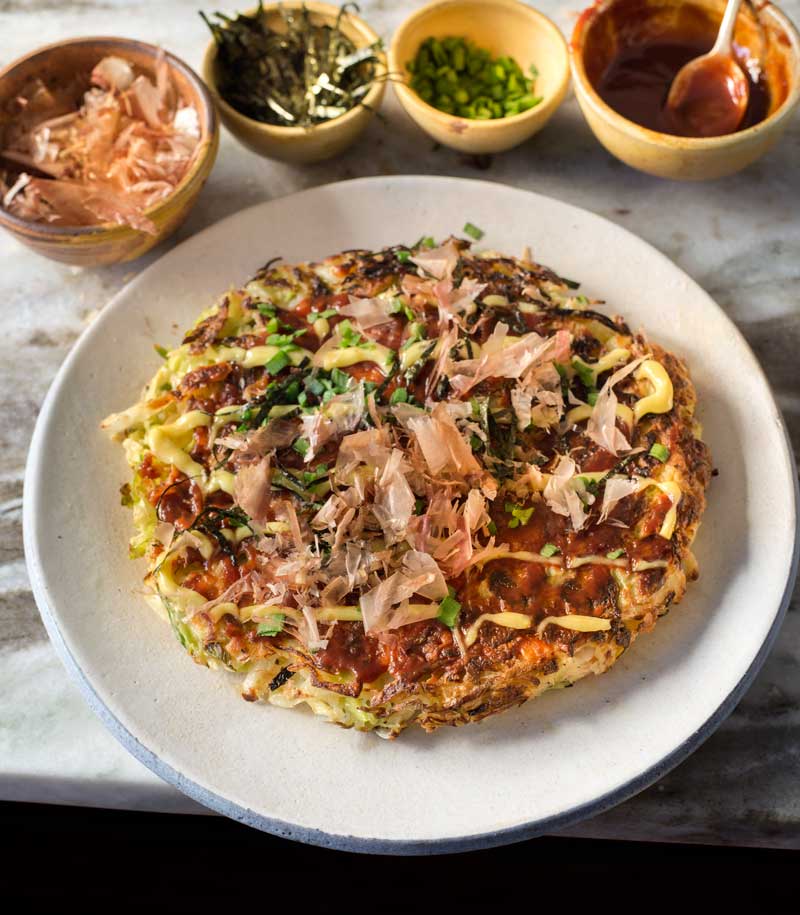
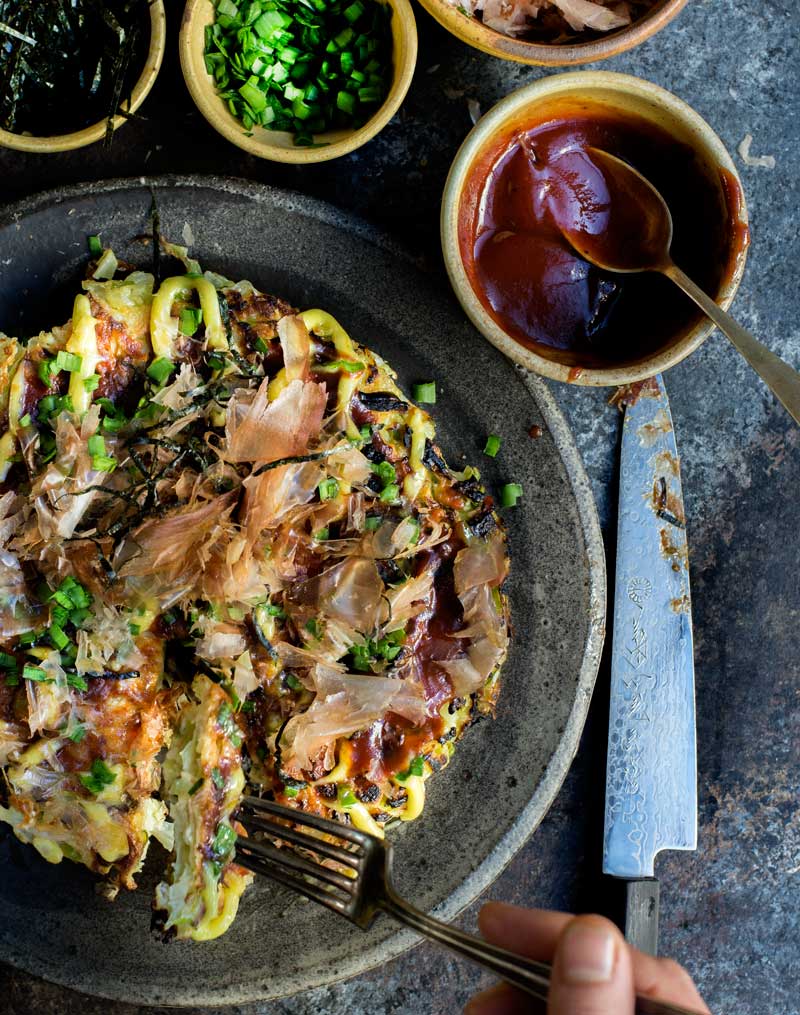
Okonomiyaki
makes 2 (~8-inch) pancakes
1 cup all-purpose flour (used Eikorn AP flour)
2/3 cup water or dashi
2 large eggs
~4 cups (300 grams/10.5 ounces) thinly sliced green cabbage
3 scallions, thinly sliced, plus extra for garnish
1/4 cup tenkasu (tempura) bits (optional)
1/2 cup (100 grams/3.5 ounces) raw shrimp, chopped into 1/2-inch pieces (optional)
6 strips (3-inches long) uncured pork belly or bacon (optional)
Oil for pan-frying
Okonomomiyaki sauce (store-bought or homemade; recipe below)
Mayonnaise
Bonito flakes (katsuboshi)
Nori, cut into thin strips
Add the flour to a mixing bowl. Slowly add the water or dashi, whisking to combine. Add the eggs, cabbage, scallions, tenkasu, and shrimp. Stir to combine.
Heat a tablespoon of oil in a skillet over medium heat. Add 1/2 of the batter to the skillet and using a spatula, flatten the batter forming a round pancake 3/4-inch thick, about 8-inches in diameter.
Add pork belly strips on top of the pancake (if using). Cook 3 to 5 minutes until golden brown (adjust the heat if the bottom is getting too brown). Flip and then cook another 3 to 5 minutes. When golden brown on the flip side and the pancake is cooked through, transfer to a plate (meat side up). Brush okonomomiyaki sauce on top. Drizzle with mayonnaise in a zigzag pattern. Top with nori strips, bonito flakes, and scallions.
Repeat with the remaining batter.
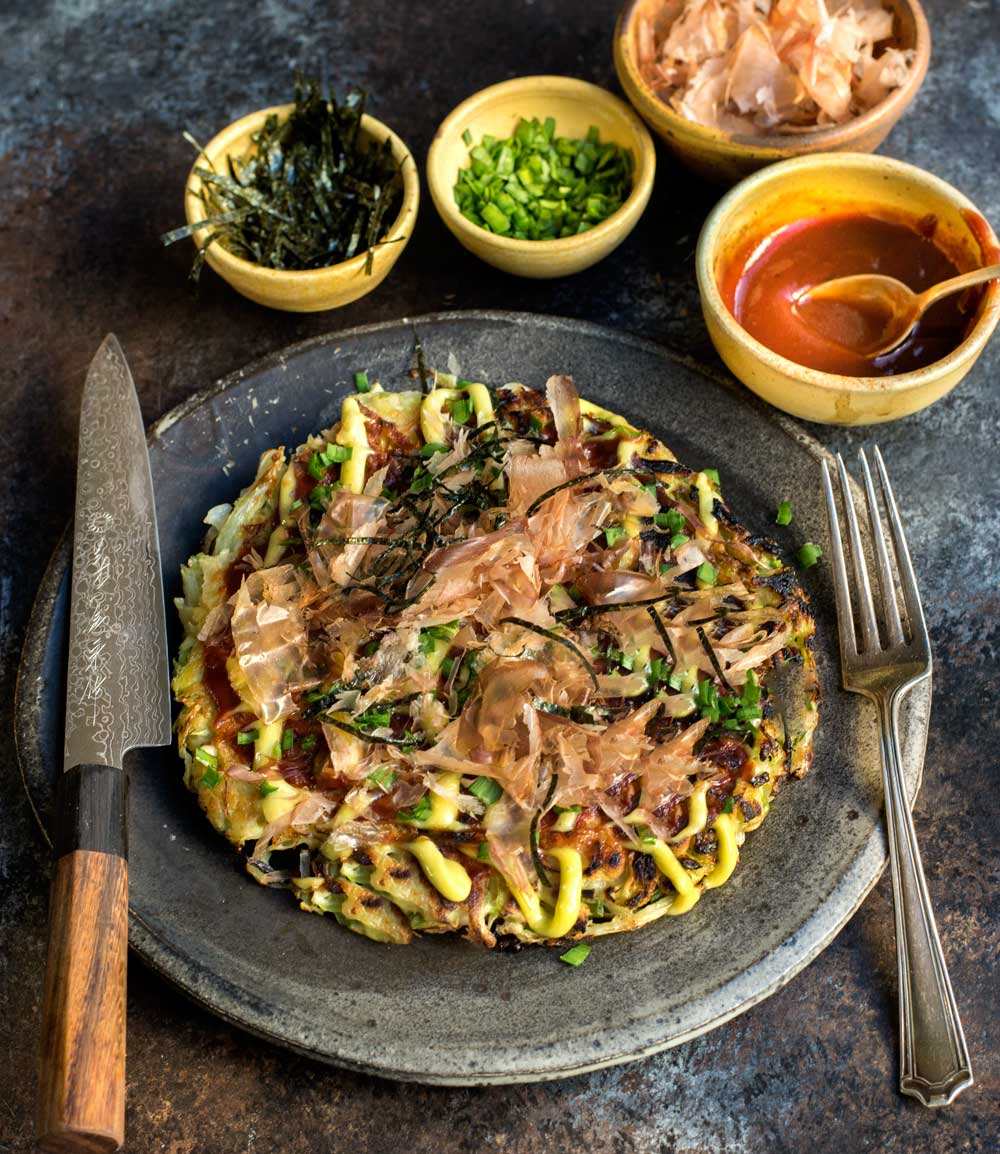
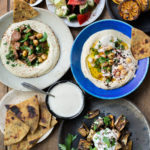
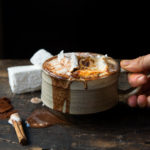
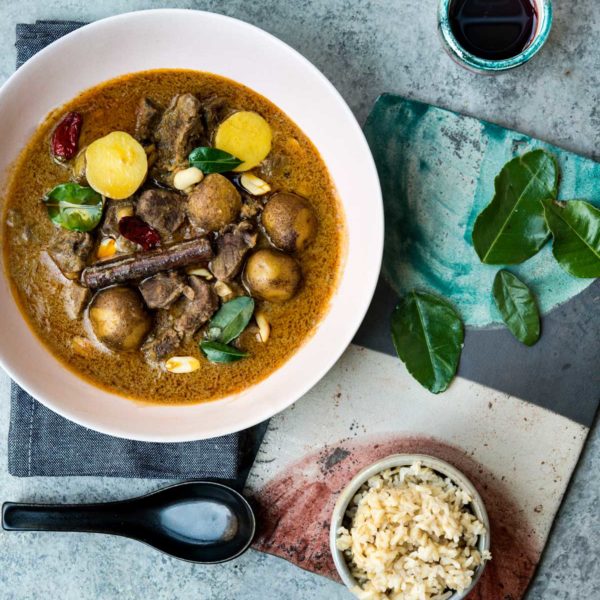
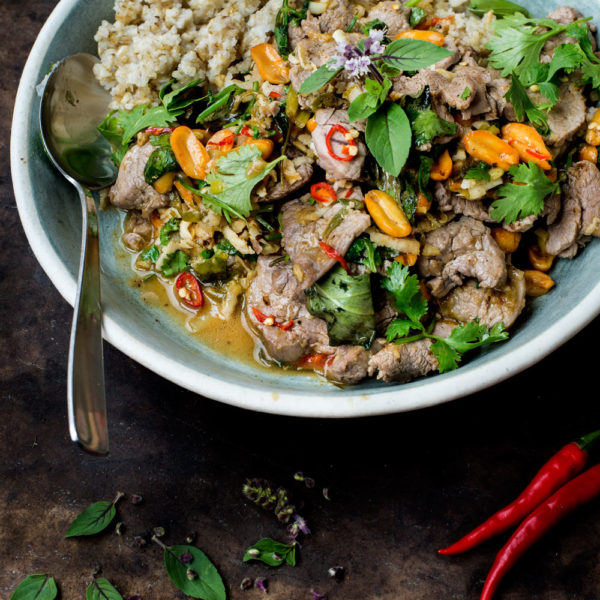
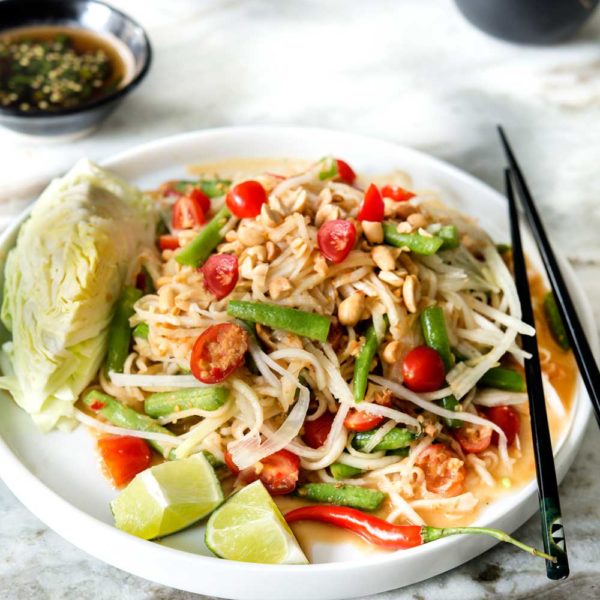


One comment